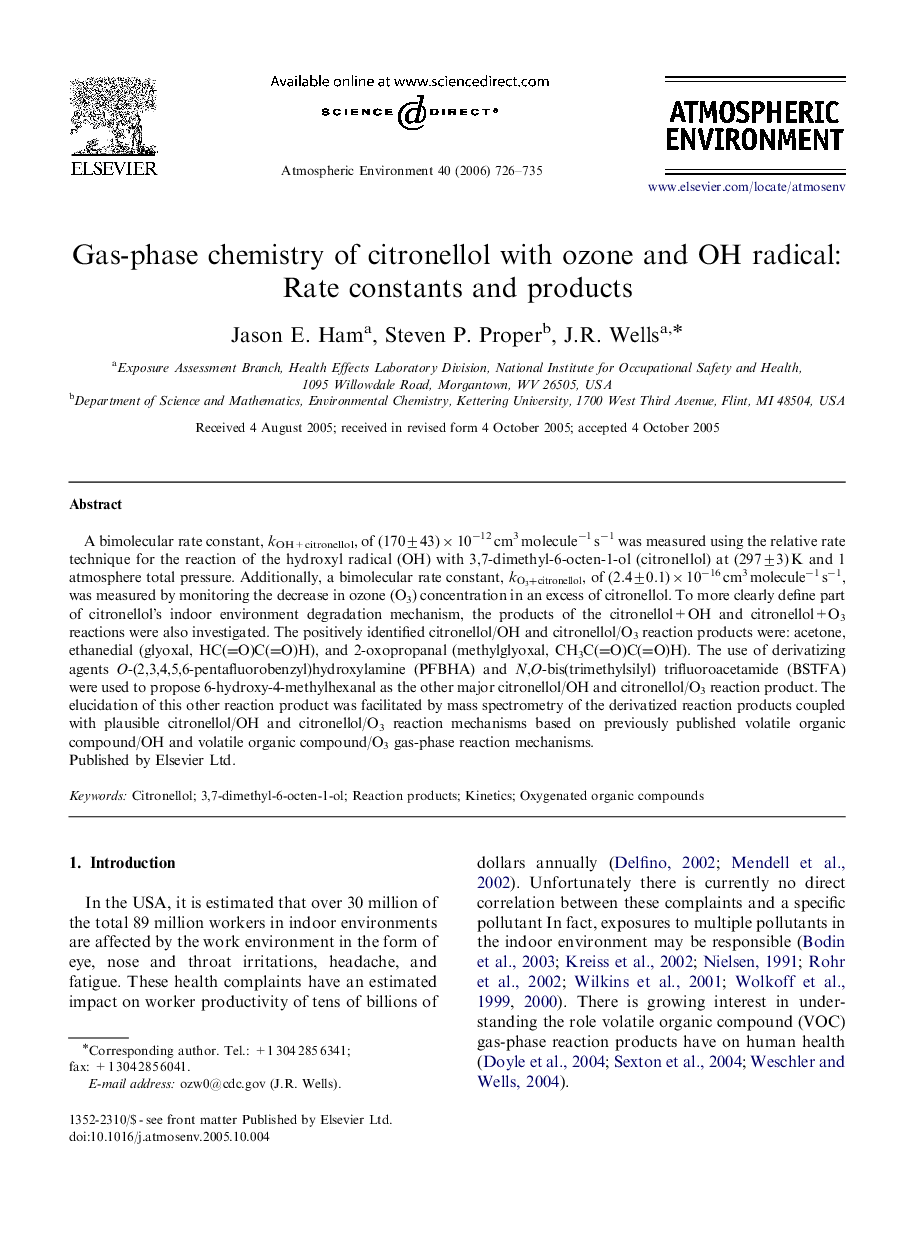| Article ID | Journal | Published Year | Pages | File Type |
|---|---|---|---|---|
| 4445043 | Atmospheric Environment | 2006 | 10 Pages |
A bimolecular rate constant, kOH+citronellol, of (170±43)×10−12 cm3 molecule−1 s−1 was measured using the relative rate technique for the reaction of the hydroxyl radical (OH) with 3,7-dimethyl-6-octen-1-ol (citronellol) at (297±3) K and 1 atmosphere total pressure. Additionally, a bimolecular rate constant, kO3+citronellolkO3+citronellol, of (2.4±0.1)×10−16 cm3 molecule−1 s−1, was measured by monitoring the decrease in ozone (O3) concentration in an excess of citronellol. To more clearly define part of citronellol's indoor environment degradation mechanism, the products of the citronellol+OH and citronellol+O3 reactions were also investigated. The positively identified citronellol/OH and citronellol/O3 reaction products were: acetone, ethanedial (glyoxal, HC(O)C(O)H), and 2-oxopropanal (methylglyoxal, CH3C(O)C(O)H). The use of derivatizing agents O-(2,3,4,5,6-pentafluorobenzyl)hydroxylamine (PFBHA) and N,O-bis(trimethylsilyl) trifluoroacetamide (BSTFA) were used to propose 6-hydroxy-4-methylhexanal as the other major citronellol/OH and citronellol/O3 reaction product. The elucidation of this other reaction product was facilitated by mass spectrometry of the derivatized reaction products coupled with plausible citronellol/OH and citronellol/O3 reaction mechanisms based on previously published volatile organic compound/OH and volatile organic compound/O3 gas-phase reaction mechanisms.
